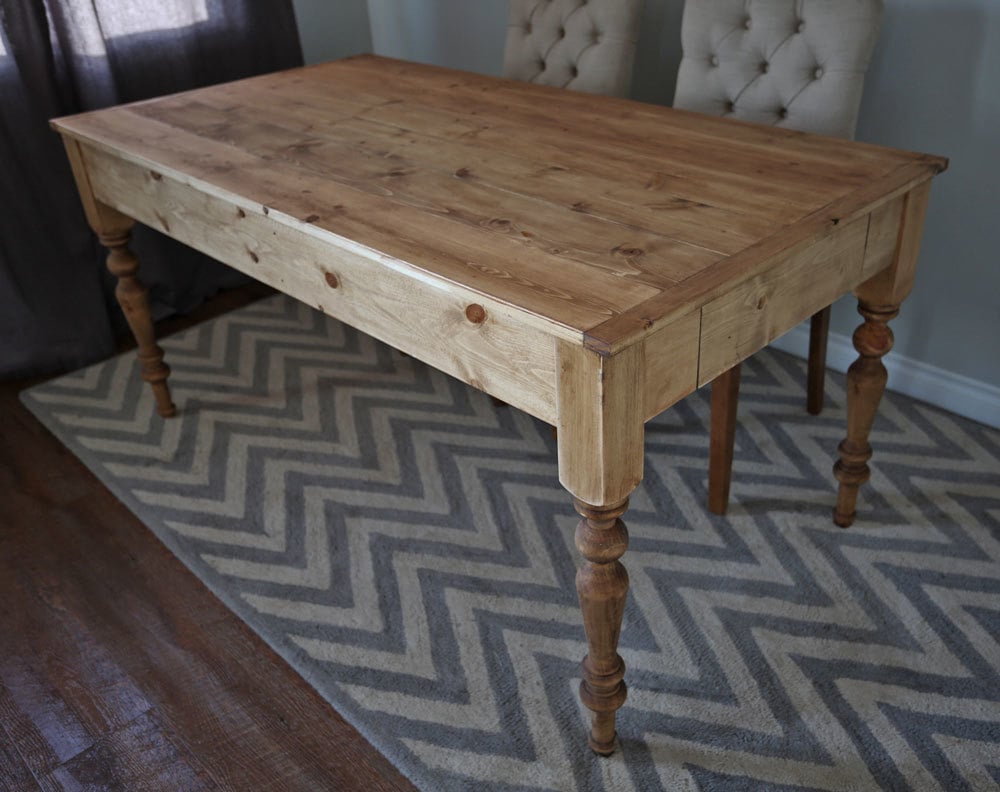
How to build a farmhouse table with turned legs by ANA-WHITE.com
Dimensions

Dimensions shown above
Preparation
Shopping List
4 - 3" x 3" turned legs - similar in style to these from Osborne Wood
3 - 1x6 @ 10 feet long (can cut exactly in half for transport)
2 - 1x4 @ 8 feet long
3 - 1x2 @ 8 feet long
Common Materials
Cut List
Table does not have drawer
2 - 1x4 @ 26"
2 - 1x4 @ 55"
2 - 1x2 @ 26"
2 - 1x2 @ 55"
6 - 1x6 @ 59-1/2"
2 - 1x2 cut to fit (approximately 33")
Instructions
Step 1
Step 2
Step 3
Project Type
Room


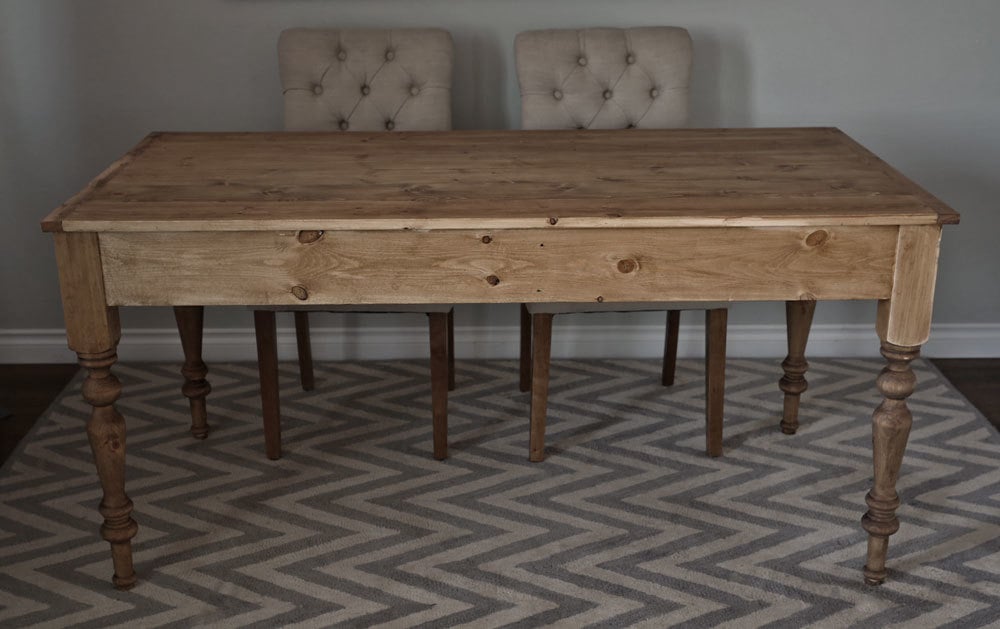












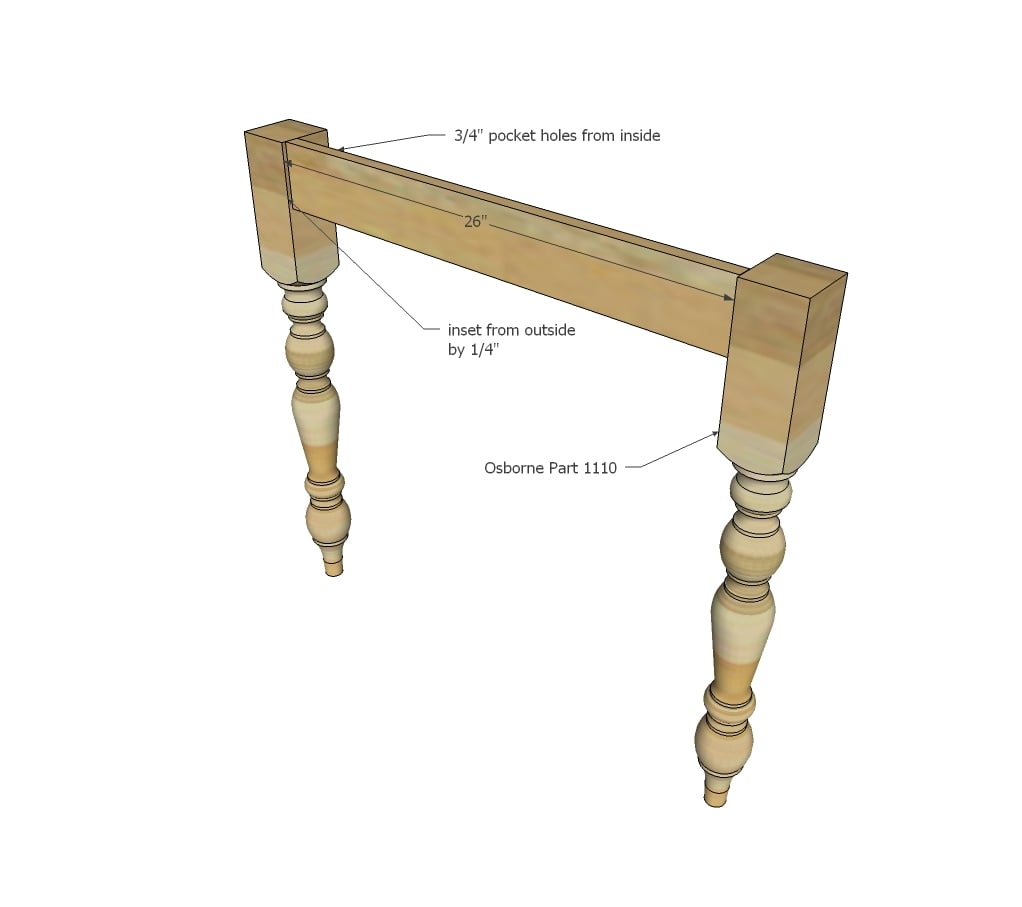




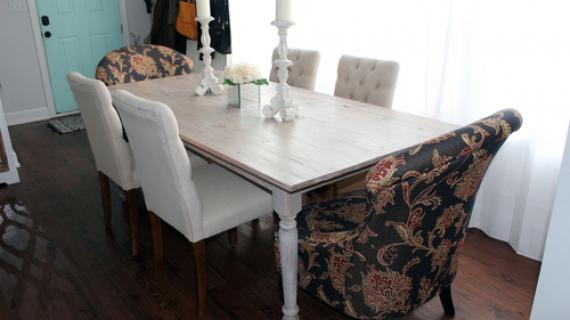
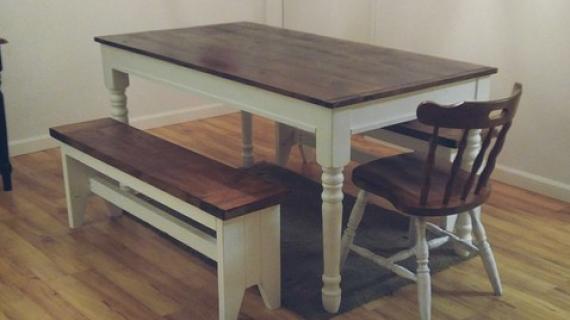
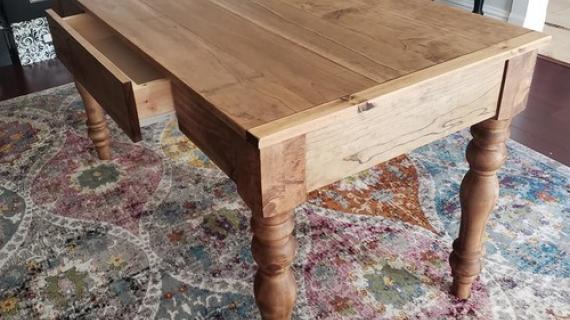

Comments
Sharon Ramsey
Fri, 07/01/2016 - 11:31
Tiny House Counter Top
I noticed the kitchen counter top in pictures of your tiny house. It looks like you have drop ins to cover sink bowls to give more counter top space. Do you have any info available on this particular subject?
Thanks for sharing your expertise!
Sharon
Donna.Luft.
Mon, 05/13/2019 - 07:11
Hello, The table is…
Hello,
The table is beautiful and my husband and I are about to get started. However I am worried about the finish. I don't want that typical yellowy pine look. Yours does not look yellow, but I can't tell for sure in pictures. Is your table more yellow in real life? Does the Golden Oak stain combat that? Should I bleach my pine first?
Thanks so much!
Donna
kwildman
Mon, 10/21/2019 - 12:14
Donna I made mine as a…
Donna I made mine as a writing desk and I used Watco Danish Oil in Dark Walnut and then went over that with Minwax Dark Wax. It still has a light finish but does not look yellow. I dont know how to attach a photo but I have one in the brag posts. You can search for White House Wood Shop on facebook and see photos there.
brdavenport
Sun, 08/02/2020 - 16:13
Stain
Did you have to sand before applying the rustoleum Golden Oak?